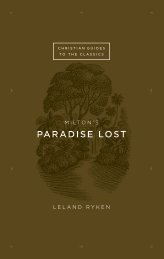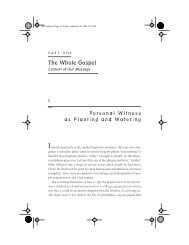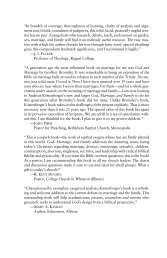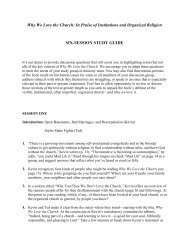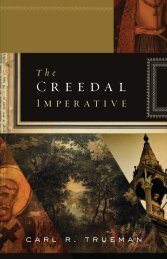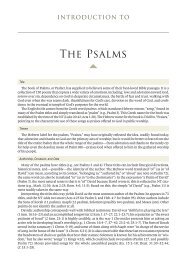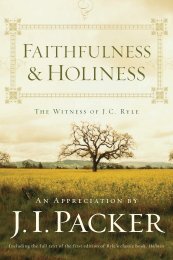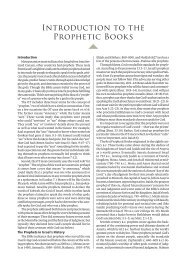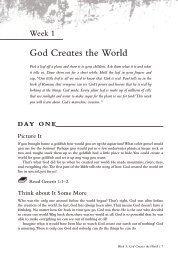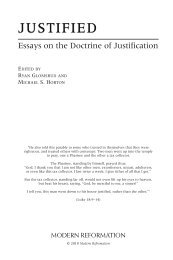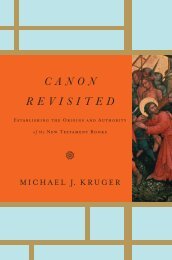PDF - Monergism Books
PDF - Monergism Books
PDF - Monergism Books
Create successful ePaper yourself
Turn your PDF publications into a flip-book with our unique Google optimized e-Paper software.
16<br />
Matthew<br />
We do not know definitively who wrote the Gospel of Matthew,<br />
but the universal testimony of the early church is that it was<br />
penned by Matthew, one of the twelve disciples. Matthew<br />
was called from his labor as a tax collector, which was one of the most<br />
despised vocations any Jew could hold, yet because of his training as a<br />
tax collector, Matthew was acquainted with lists and genealogies from the<br />
public registry, so he would know the family history of the people being<br />
taxed. He was also, obviously, literate and probably spoke two or three<br />
languages. Therefore, his work as a tax collector, under the providence of<br />
God, was the Lord’s preparation for Matthew to begin his most important<br />
and celebrated task. This book has been called, even by critics of historic<br />
Christianity, the greatest book ever written.<br />
The Genealogy<br />
Matthew begins his Gospel with these words: The book of the genealogy<br />
of Jesus Christ (v. 1). Here is a Jew writing principally for Jews,<br />
and his first assertion is that he is writing about Jesus Messiah. Christ is not<br />
the name of Jesus. His name is Jesus bar Joseph or Jesus of Nazareth. The<br />
term Christ is His title, and it means “Jesus the Anointed One” or “Jesus the<br />
promised Messiah.” Matthew mentions another important title that would<br />
resonate with his Jewish audience: the Son of David (v. 1). This title for<br />
Jesus, Son of David, is used more by Matthew than by any other Gospel<br />
writer, because the Messiah was to come from the loins of the greatest king<br />
of the Old Testament; He would be of the seed and lineage of David. So<br />
from the very beginning of his Gospel Matthew calls Jesus “Christ, the<br />
Son of David.”<br />
Matthew then adds, the Son of Abraham (v. 1). One of the great difficulties<br />
of harmonization in sacred Scripture is the relationship between<br />
the genealogy presented by Matthew and that presented by Luke in his<br />
Gospel. There are many places where these two genealogies do not agree.<br />
The first point of difference is that Luke traces the genealogy of Christ<br />
back to Adam, indicating that this Christ is not simply the Savior of the<br />
Jews but that the scope of Jesus’ redemptive activity is universal. He is the<br />
new Adam, who recovers the promise that God made originally to Adam<br />
and Eve in the garden. Matthew, on the other hand, goes only as far back<br />
as Abraham because he is writing to a Jewish audience, to people who<br />
would want to know about the ancestry of Jesus as well as that of Matthew.<br />
It is important that His ancestry can be taken back to Abraham.<br />
Ancestry was important to Jewish people, as it has been to people of all



